Communication evolution
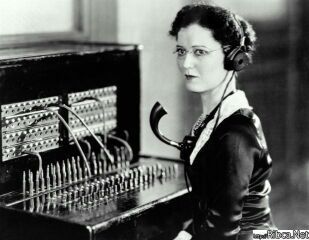 For me personally, there is nothing more pleasant to be on a business trip in some other city and after a hard day’s work over a cup of tea of
For me personally, there is nothing more pleasant to be on a business trip in some other city and after a hard day’s work over a cup of tea of They began to remember from ancient times ...
The party was in full swing when we began to recall the development of communication technologies. The main idea is to remember everything that was somehow aimed at transferring informational messages between people. The first thing that everyone remembered (seeing a colleague entering the room, whom we sent for another portion of foam tea) was a messenger or messenger.
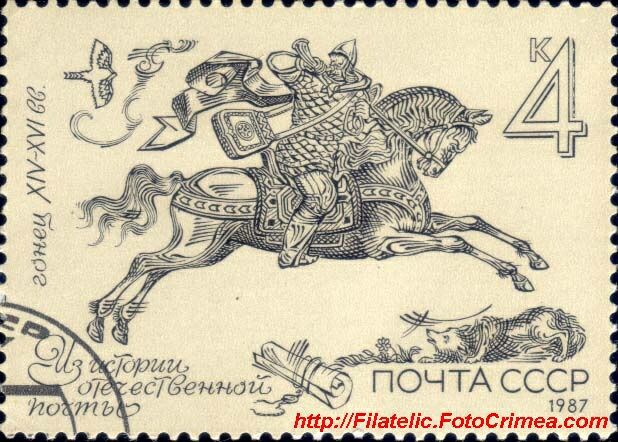
')
From the Stone Age begins the story of the exchange of information messages. Then the information was transmitted by the smoke of fires, blows to the signal drum, and the sounds of pipes through an extensive network of signal towers. Later they began to send messengers with oral news. Perhaps this is the first and most effective way to transfer urgent messages between people. Such a messenger would memorize the "letter" from the sender's words, and then retell it to the addressee. Egypt, Persia, Rome, the state of the Incas - had a developed, well-organized mail. The messengers cruised day and night on dusty roads. They took turns or changed horses at specially built stations. Actually, from the Latin expression "mansio pozita ..." - "the station at the point ..." and the word "mail" occurred. 2500 years ago, a relay transmission method was already used to transfer letters from the messenger to the messenger. In the last quarter of the 9th century, almost at the very beginning of the existence of Kievan Rus, the foundations of Russian mail were laid - one of the oldest in Europe. Only communication services of Great Britain and Spain can be placed on the same line with it in time of occurrence. A separate house is the courier service , whose history in Russia goes back over two centuries. However, this is a special type of communication that served exclusively government officials and the military.
Ancient letters - a recognized example of a culture of communication people. Special paper was produced, perfume for impregnating envelopes, clichés, sealing wax and seals - all this was in the order of things and writing a letter to another person was a whole ritual.
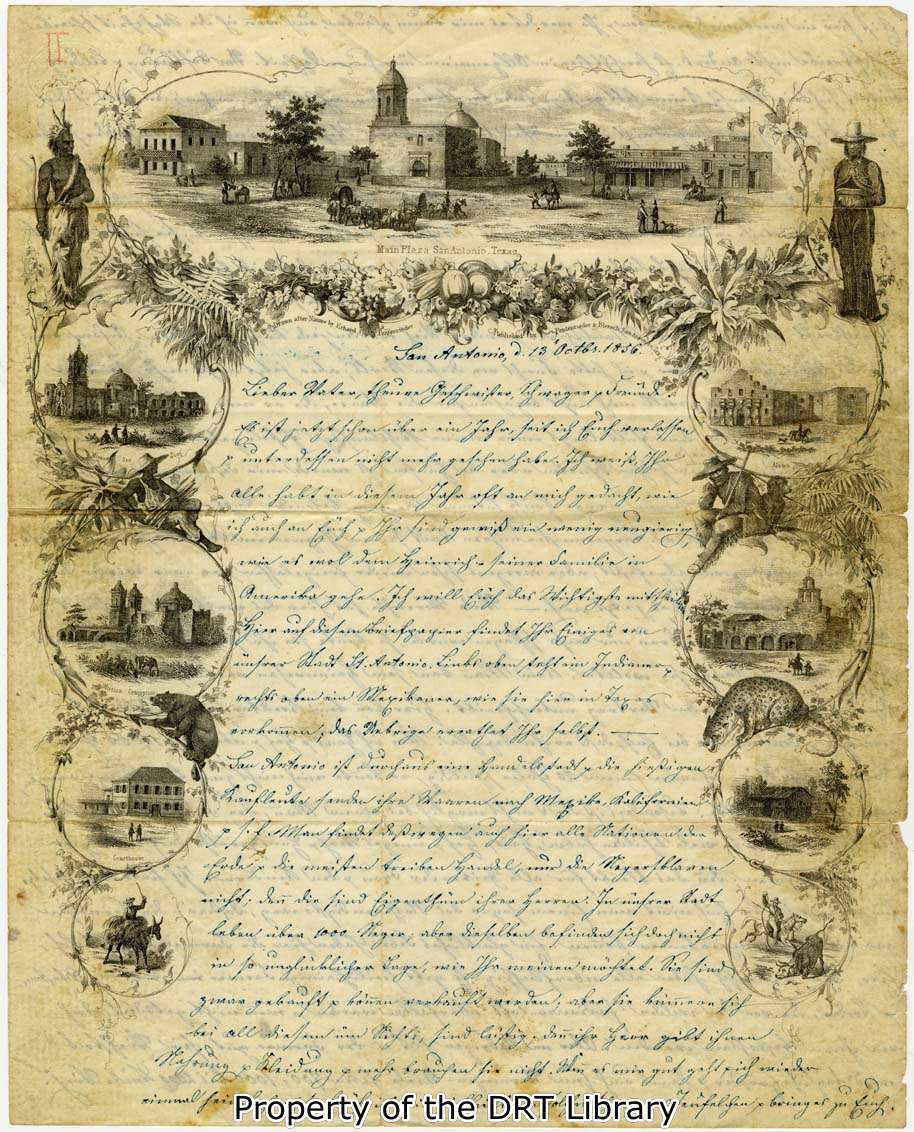
Pigeon mail
How fast would not be the messenger - he could not keep up with the bird. A huge contribution to the communication of people made postal pigeons. A kind of short message service - after all, a pigeon could carry only a small load, a short letter, or even a note. However, the pigeon post was a very effective information channel that was used by politicians, brokers, the military, and even ordinary people.
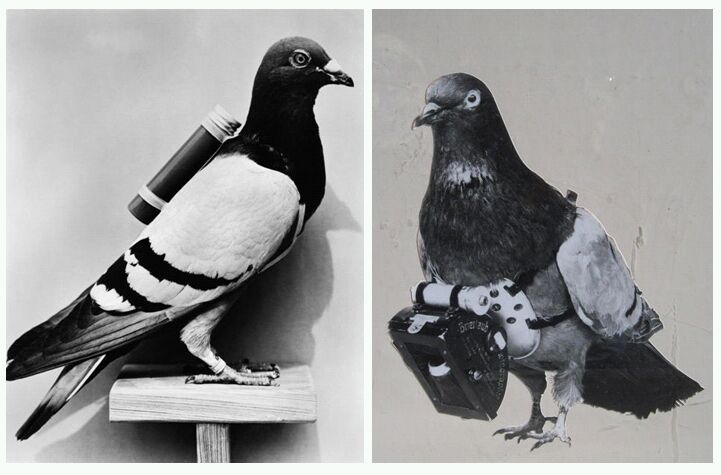
Device Parameters
Flight range - up to 1500 km. ( Competitions come from a maximum distance of 800 km.)
Speed - up to 100 km / h
Flight conditions - any (rain, snow is not how much)
Service life - up to 10-15 years (with good care)
Price - from $ 100 (the most expensive pigeon Danish syubian named "Dolce Vita" was recently sold for 329 thousand dollars)
Passport of the most expensive pigeon (identification goes over the bird's pupil)

Almost any pigeon can be a mail. These birds have an amazing ability to find their way to the nest, but on the condition that he was born there, stood on the wing and lived for about 1 year. After that, the pigeon can find the way to the house from any point, but the maximum distance cannot be 1,500 km. It is still not clear how pigeons orient themselves in space. Argued that they are sensitive to the magnetic field of the Earth and infrasound. Also they are helped by the sun and stars. However, there are disadvantages. Pigeon Mail - simplex communication. Pigeons can not fly back and forth. They are able to return only to the parent nest. Therefore, for informational purposes, pigeons were taken away in special cells or cars to another place, where it was necessary to establish an “information channel”.

There are probably thousands of stories and legends about the role played by the pigeons in human life. One of these about the Rothschild family. The news of the defeat of Napoleon at Waterloo in 1815 was received by Nathan Rothschild through a pigeon two days earlier than official news, which gave him the opportunity to successfully conduct a campaign on the stock exchange with French papers and get 40 million dollars of profit from this deal in 1815 prices! Even in our times it is not bad. A typical example of the importance of information, especially in financial areas.
Maritime and military communications
The most important place for communications is the theater of operations. Before the advent of telegraph and wire telephone exchanges, semaphore systems were actively (surprisingly and still) used. Both sign and light.
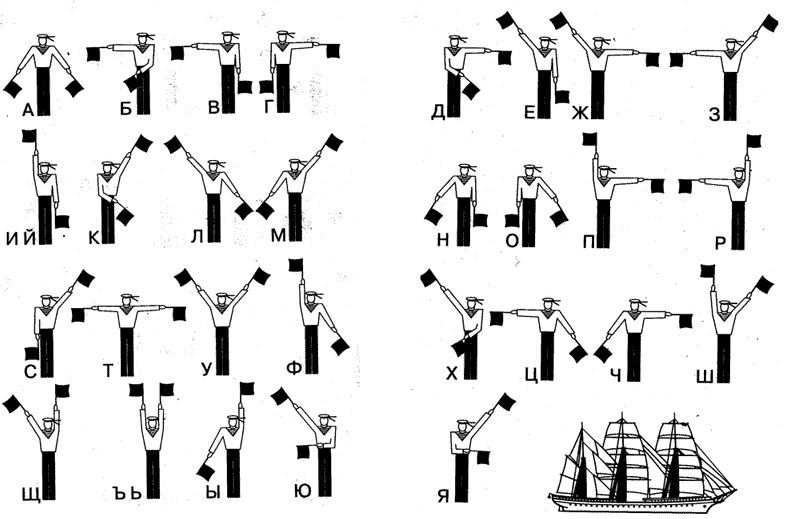
Semaphore, or flag, the alphabet has been used in the Navy since 1895. It was developed by Vice-Admiral Stepan Makarov . Russian flag alphabet contains 29 alphabetic and three special characters and does not include numbers and punctuation marks. The transfer of information in this form of communication is spelled, and the transfer rate can reach 60-80 characters per minute. Strange, but in the Russian Navy since 2011, the training of sailors in the semaphore alphabet has been abolished , although in most maritime powers of the world it is an obligatory discipline.
Interesting is also the alarm system using special flags . Used by ships. Only 29 pieces, which, as I understand it, should be known to everyone who goes to sea. Here, for example, the first six flags. Some are quite funny.

Wired connection. Telegraph, telephone, teletype ...
Let's talk about electrical systems. Of course, let's start with the telegraph. One of the first attempts to create a means of communication using electricity dates back to the second half of the 18th century, when Lesage built the electrostatic telegraph in Geneva in 1774 . In 1798, the Spanish inventor Francisco de Salva created his own design of electrostatic telegraph. Later, in 1809, the German scientist Samuel Thomas Semmering built and tested the electrochemical telegraph. The first electromagnetic telegraph was created by the Russian scientist Pavel Lvovich Schilling in 1832.
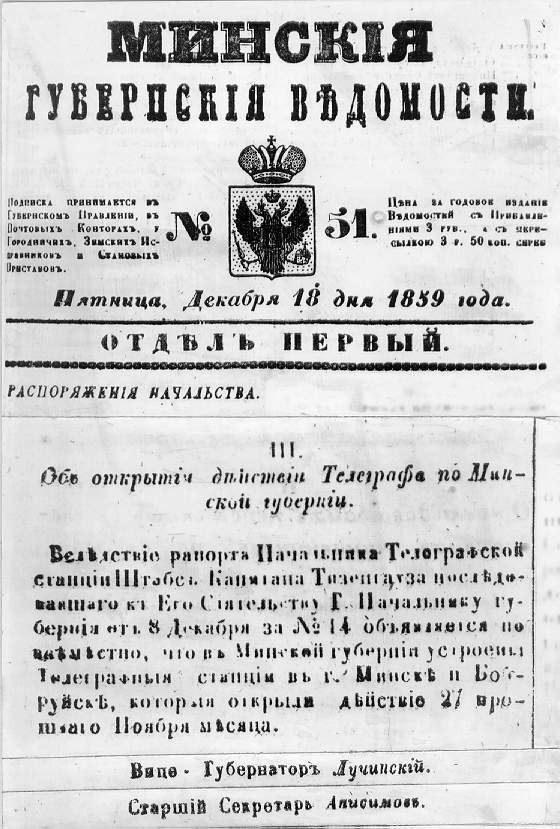
Of course, at this time the wired communication infrastructure was rapidly developing. The appearance of the Morse apparatus and the deft patenting of the telephone by Bell (debates about who nevertheless invented the very principle of the telephone has not yet died away ) led to the first wave of informatization of the planet. It was an amazing time for the development of new technologies, which gave tens of thousands of jobs. Telephonists, technicians, engineers, telephone and telegraph companies.
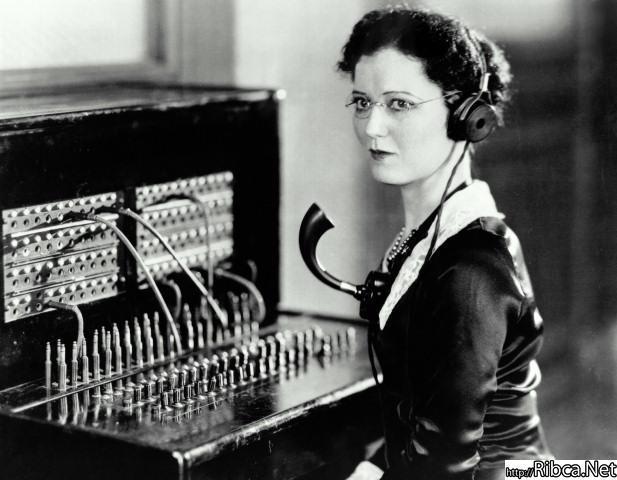
Speaking of telephone operators. Requirements for applicants were high. A girl should be smart, have an excellent memory and be pretty. Probably, such a demand was because the managers of telephone exchanges were at that time only men.
Of course, companies for the production of various telegraph equipment began to develop rapidly. Original technological startups of the 19th century).

Certainly important for the development of communication was to introduce ordinary people to them. It was not uncommon to see such promotions on the streets of cities. Telephone box on wheels. Just like now.

And, of course, people were interested in the task of transmitting graphic information. Since the invention of the telegraph began work on the transfer of images. Mostly photos. Developed the first prototypes of fax machines. However, it was possible to make an acceptable photo-telegraph apparatus only after the Second World War. And to transfer the image by phone at all in the sixties. One way or another, these technologies have appeared and cannot surprise us.
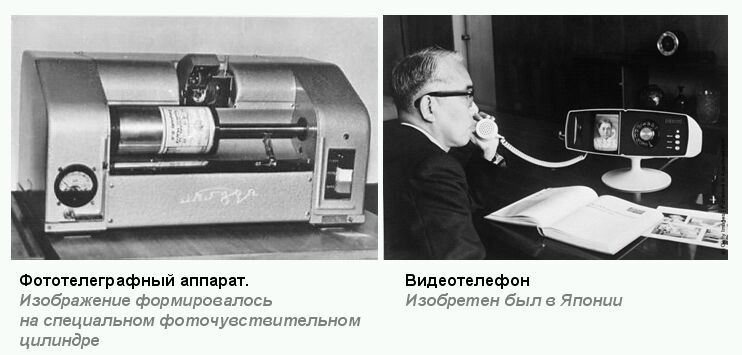
As I understand it, in the upper right corner is the eyepiece of a video camera, and behind the screen there is equipment for image transmission. Cumbersome, apparently, was the system)
Invention of radio
This breakthrough in technology came after the invention of the radio. Thanks to this, we managed to get rid of the wires and establish communication practically all over the planet. Of course, first of all, this technology got into the military. Almost immediately, the radio began to force out the wired telegraph. But, of course, not immediately. The first radio equipment was unreliable and extremely expensive.

Transmission of voice information was not possible. Only the Morse telegraph code was used, but it was a real miracle.
Of course, thanks to the invention of the radio, we owe the appearance of voice radio stations and radio telephones, then paging and cellular communications. The invention of television and the emergence of information networks that crown communication technologies in our modern concept stand apart.
In conclusion...
Here are my personal dozen heroes of the Evolution of Communication. You know many, and some you may not know. In any case, they are the most worthy people of their time, whom humanity will never forget. Let a little pathetic, but it really is!
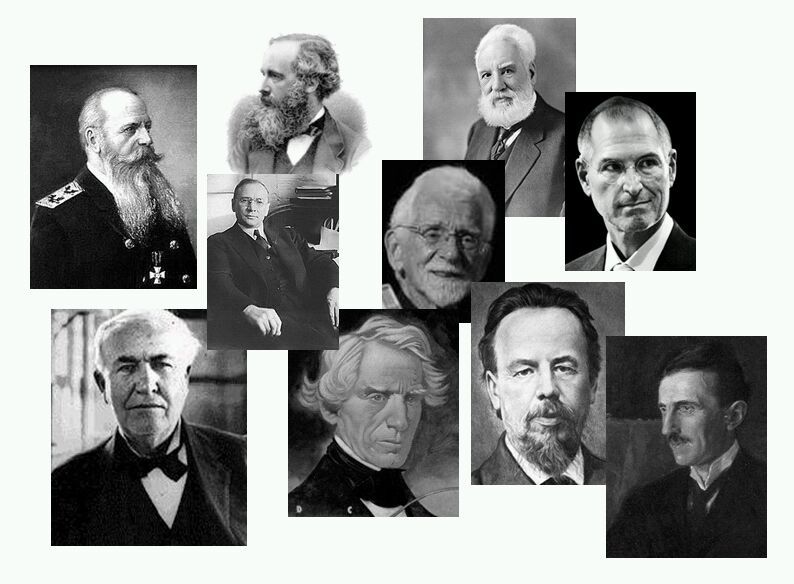
Source: https://habr.com/ru/post/234959/
All Articles